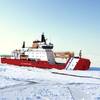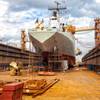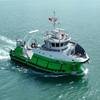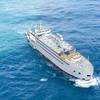Kongsberg Maritime has been awarded a $3.2m contract to provide an EM 122 1ºx 1º multibeam hydrographic echo sounder and one 3º SBP 120 sub bottom profiler to the University of Stockholm and the University of Gothenburg, Sweden. The Knut and Alice Wallenberg foundation have financed the purchase together with the Swedish Research Council.
The system is to be installed on the Icebreaker Oden, which is owned and managed by the Swedish Maritime Administration, Norrköping, Sweden. Oden built by Götaverken-Arendal in Gothenburg in 1987 is a 107m icebreaker vessel with 19 crewmembers and a top-speed of 15 knots.
The EM 122 12 kHz multibeam echo sounder is designed to perform seabed mapping - bathymetry and seabed imagery - to full ocean depth with an unsurpassed resolution, coverage and accuracy. It represents a major improvement from previous models by offering significantly larger swath width, improved data density, and greatly improved resolution. Beam focusing is applied both during reception and transmission and the EM 122 is equipped with a function to reduce the transmission power in order to avoid hurting mammals if they are close by.
The receive transducer is wideband. In conjunction with a separate low frequency transmit transducer; the EM 122 can deliver sub-bottom profiling capabilities with a very narrow beam-width, using the SBP 120 Sub-Bottom Profiler (optional). If fitted on an icebreaker such as ODEN, the system can be fitted with ice-windows to prevent the transducers from being damaged during ice-breaking.
Oden is one of seven icebreakers operated by the Swedish Maritime Administration. Designed for escort ice-breaking and Arctic research operations, ODEN is very flexible, carrying scientific equipment, container labs, frozen storage, containers, and deep drilling equipment for geological purposes, etc. Her icebreaking capability is 1.9 m level ice at 3 knots (5.5 km/h), 8 metre core ice.
Oden has regularly carried out scientific expeditions to the central Arctic Ocean since 1991 and the new multibeam has been installed to enhance the icebreaker's scientific survey capability. The first multibeam mapping expeditions will take place in 2007 and include the completely unexplored areas north of Greenland.













